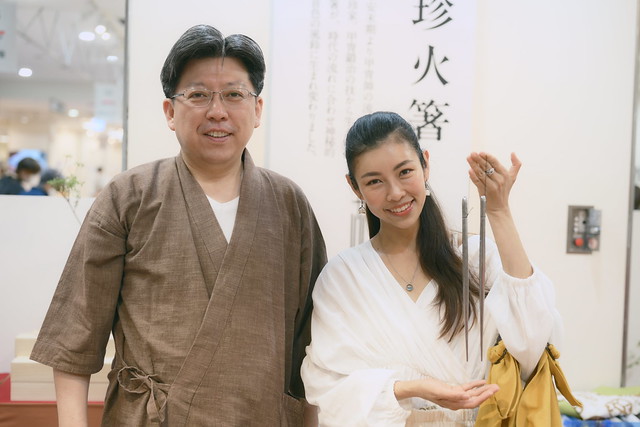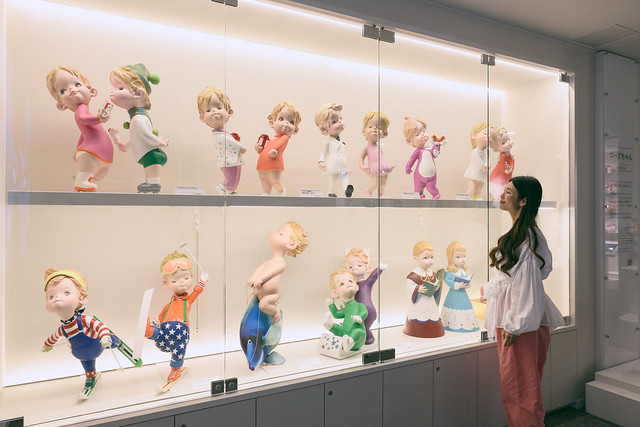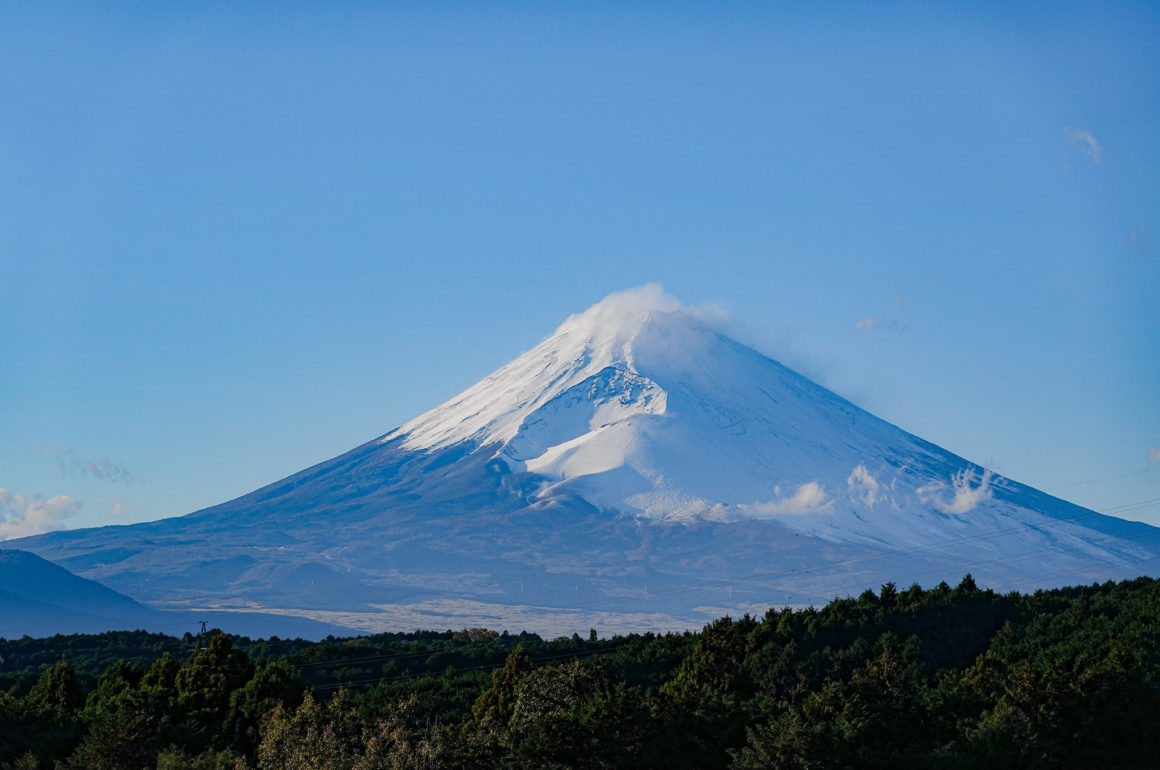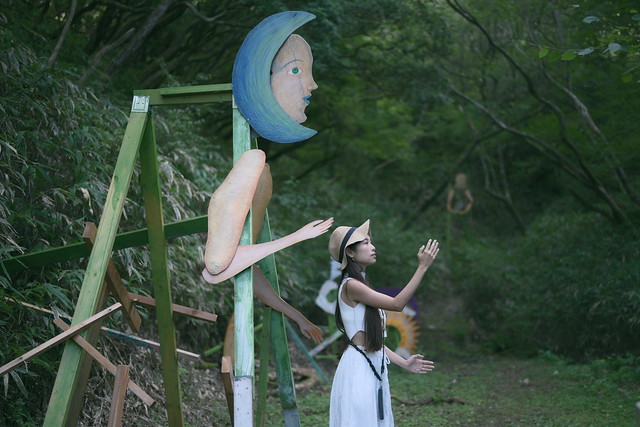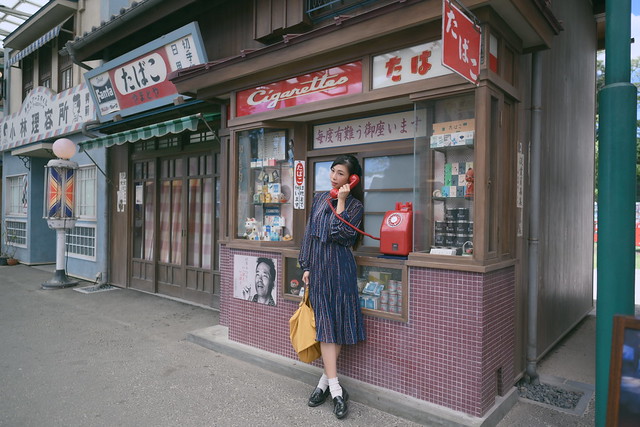Read my previous posts:
MIE PREFECTURE
GIFU PREFECTURE
Today, we are exploring the third largest city of Japan, Nagoya. Nagoya is so widely known worldwide that many has mistaken it as a prefecture itself, just like Tokyo and Osaka. Nagoya is but a city of Aichi Prefecture, but this charming city has so many allures in itself that I am dedicating an exclusive post to it.

We will be looking at other attractions in other regions of Aichi prefecture in a separate post later on.
First of all, if I must be completely honest, Nagoya was never on my list of sightseeing priorities given how much of urban vibe I already get in Tokyo daily. Nagoya to me, was but a station seen out of the windows of Nozomi shinkansen whizzes through from Tokyo to the west of Japan. It never occurred to me to actually spend a couple of days traversing this metropolitan region between the east and west of Japan.
My most recently visit to Nagoya however, has changed my mind completely, and once again I am convinced that there isn’t a corner in Japan that I wouldn’t adore.
Access

Nagoya Station
One would never ever have to fuss over getting into Nagoya, no matter where you are from. For starter, Nagoya is just one station away from Kyoto (30 minutes) and two stations away from Tokyo (1 and a half hour), if you hop on a Nozomi Shinkansen.
There are also direct flights into Chubu Centrair International Airport domestically and internationally. Getting into Nagoya Station from the airport:
★Special Airport Rapid Limited Express “μ-SKY” (prounced “myu sky”) by Meitetsu Railway takes only 28 minutes (reserved seats only). Fee: JPY1250
★Aiport Rapid Limited Express by Meitetsu Railway takes 35 minutes (non-reserved seats). Fee: JPY890
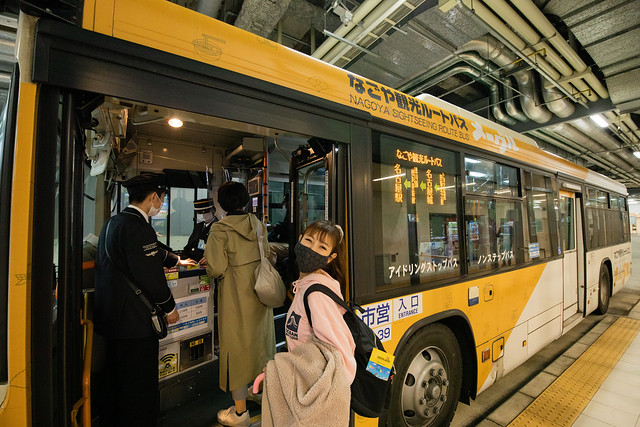
Me-guru sightseeing route bus
Once you get into Nagoya city, the rest is a breeze. Most of the sightseeing destinations are accessible either on foot from train stations, or you can hop on Me-guru, a sightseeing route bus bringing you all around town including major attractions such as Nagoya Castle, Noritake Garden, Tokugawaen Garden, Nagoya TV Tower, Sakae as well as Toyota Commemorative Museum of Industry and Technology, for only JPY500 for a one-day ticket.
Here are some of the places you definitely want to check out during your stay in Nagoya City:
Nagoya Castle 名古屋城

Undoubtedly the most prominent attraction of Nagoya, the castle of the same name holds great significance to Japan’s history. It was ordered to be built by the greatest shogun, Tokugawa Ieyasu in 1610, and his 9th son, Tokugawa Yoshinao lived there as the first lord of Owari Province (the old province name for Nagoya and its surrounding area).
Nagoya castle was the first castle to be designated a Japanese national treasure in 1930, however almost all of its precincts were burnt to ashes due to air raids of WWII. What you see now is a rebuilt of year 1959.

Historical characters parading around Nagoya Castle
The real highlight of Nagoya Castle, however, is the Honmaru Palace, the most lavishly gold-decorated masterpiece you will ever see, restored to its original perfection since Ieyasu built it 400 years ago specially only for the Tokugawa family’s brief soujourn at Owari province.

Honmaru Palace
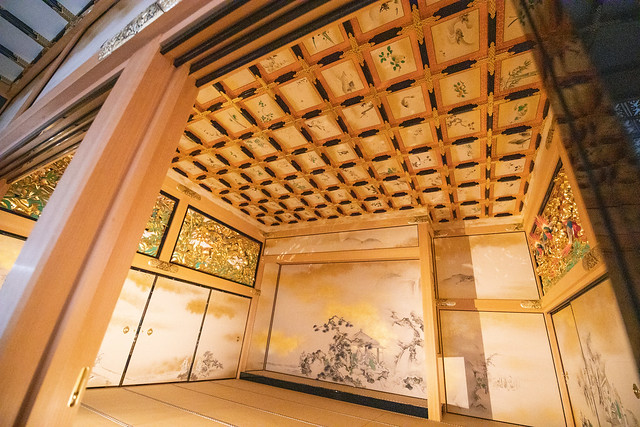

In another word, the Honmaru Palace is a 10 star hotel for the Shogun to transit from Edo to Kyoto, truly showing how wealthy the Tokugawa families are in their seat of power.
Be in awe at the palace’s unapologetic ostentation, and feel for a moment what the noble and elite admired in the glorious past.
Nagoya TV Tower

Nagoya TV Tower is another symbol of the city. Little did I know, Nagoya TV actually preceded my favorite Tokyo Tower as the oldest broadcasting tower in Japan, built in 1954 by the same professor who also designed Sapporo TV Tower and world icon Tokyo Tower.
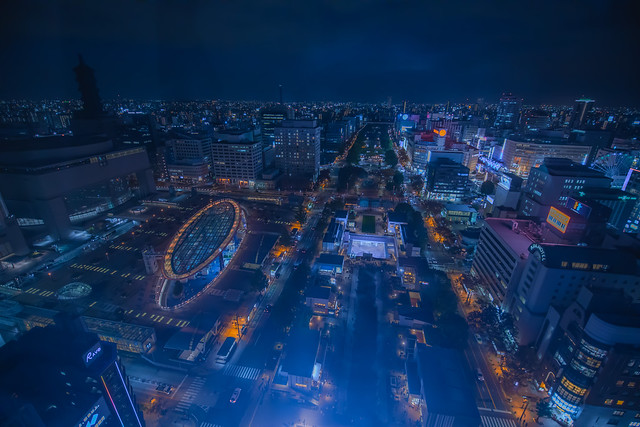
Did you know that aside from enjoying a panoramic view of Nagoya city from the observation deck, you can actually stay in the tower?! Yes! There’s the newly opened Tower Hotel, the world’s first hotel inside a tower!
After an intensive renovation since 2019, Nagoya TV Tower is now more stylish than ever with a lot of focus on art. Do check out also its new mascot, Uemiiya, a bear-looking animal who allegedly looked up at the TV tower for too long that he can only face looking up now.
The surroundings of Nagoya TV Tower – Hisaya Odori Park has recently been refurbished into a super stylish district with lots of shopping and restaurants, you may want to take a stroll around the area after your TV tower visit. It makes a perfect dating spot for young couples too given its chic, instagenic ambience.
LEGOLAND Japan
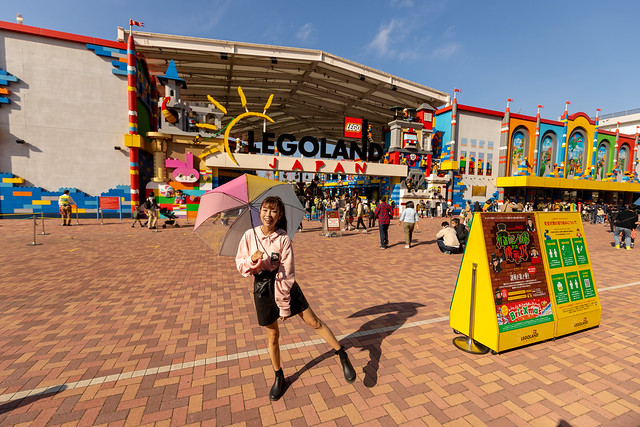
You wouldn’t want to miss adding this to your itinerary if you are traveling with Lego-crazy kids. If you have already been to LEGOLAND Malaysia, note that the concept and structure is extremely similar, except you get all Japan-version everything, including those extra bows and extra well-mannered visitors.

My favorite part of the park is no other than Miniland, particularly a miniature of my favorite city in the world (sorry Nagoya haha). A whole Tokyo made of tiny LEGO blocks!! The attention to details are pure madness.

Ninjago fans will be happy to know there’s an exclusive area dedicated to the popular movie.

Socially awkward as usual, I’m happy to have made some FRIENDS who are very smiley and polite.

Note that there’s also a Japan version of SEALIFE and LEGOLAND Hotel if your kids decide that they are having too much fun and don’t wanna go back home.
Toyota Commemorative Museum of Industry and Technology
First of all, the mistake I made was not allocating enough time for this top ranked attraction of Japan. Make sure you have at least 2 hours to tour this massive facility that will sure be an eye-opener for even well-versed automobile enthusiasts.

How do I even start?
First of all, I think it needs a more interesting name. Given how grown-up and, no offense, dull its super long title sounds, many parents may not even pick up on this “museum” while itinerary planning.
But trust me, you absolutely do not want to skip this, whether you are a lone traveler, in the city for honeymoon, or dragging your whole family here to Nagoya. It is well worth the JPY500 you pay for entrance fee, I promise.

To save us both troubles, let’s abbreviate things and call this facility “Toyota Museum”* right here just for now. Know that it is extremely foreigner-friendly, having 6 different language guide, and also special English-speaking tours. I have yet seen a museum more attentive, professionally international than Toyota Museum.
*There’s another museum by Toyota called the “Toyota Automobile Museum” in Nagakute city of Aichi prefetcure, so please do not confuse the both of them. Remember the one I went to is in Nagoya city.
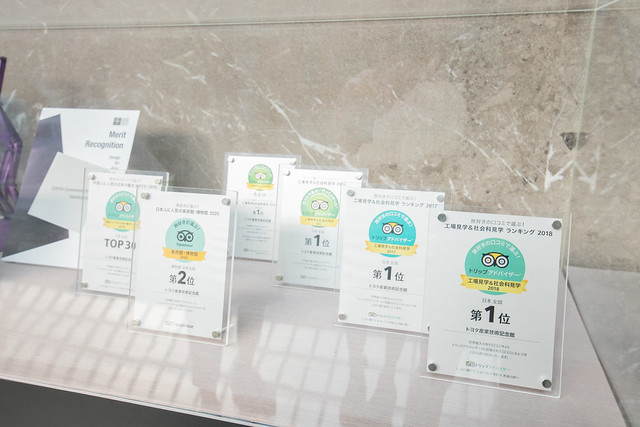
You shall also know that it is ranked #1 on Tripadvisor in various categories of travel attractions.

Did you know that Toyota is Aichi-prefecture-born, and was called Toyoda before, and they didn’t even make cars in the beginning??
Wow that alone is too much to handle.
Toyota started as a company that manufactures textile machineries. Yes. It started as a small factory that spun threads. How did it transform into the world class automobile giant that it is today?

There are lots of stories to be told, each of them refreshing and inspiring. All in all, Toyota holds close to its truth since its foundation over 100 years ago – “Spirit of Being Studious and Creative” and “Making Things”.
I am so glad to have visited this important museum of one of the core industries that shaped modern Japan and continue to contribute to the world’s creative innovations.

I was further moved by Toyota’s effort of creating halal menus as well as a prayer room to ease Muslim friend’s travel in the facility.
If you come with young-aged children, know that there are many fun activities to enjoy such as the “Robot who plays Violin”, Technoland where children get to learn all about technology through play and experiments, as well as a library.
Osu Shopping District 大須
Osu is a crazy world in itself. With over 1200 stores in the district, you can find all sorts of lifestyle needs from a fashion street, food street, to electronics district that rival that of Tokyo’s Akihabara with anime, cosplay and idol goods abundant, and even a digital shrine and temple right next to each other. Not to mention it is also it is also one of the venues for the annual World Cosplay Summit.

A shrine-and-temple-in-one
Here you will find a series of shops called KOMEHYO sprawled around the district. It is the largest second-hand shopping center in Japan, offering great bargains from branded goods to kimono.

100 yen kimono
I went absolutely crazy in here. Imagine that the cheapest kimono goes for as low as JPY100!
Atsuta Jingu 熱田神宮
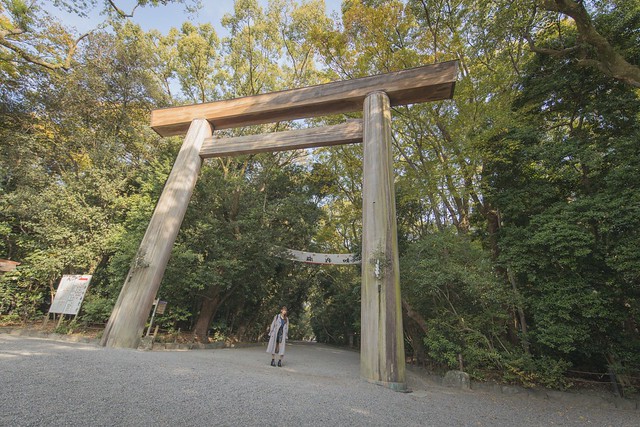
Legend has it that when the god of sea and storm of Shinto, Susanoo, had to slay an eight-headed serpent, he did so with the help of his legendary sword, Kusanagi-no-Tsurugi. Some 1,900 years ago, that sword, one of the three items of the Imperial Regalia of Japan, was enshrined here at Atsuta Jingu (although such fabled treasure is never displayed to the public and no one has claimed to have ever witness it before except for the emperor himself. The other two regalia are the mirror at the Ise Jingu and the jewel at the Imperial Palace in Tokyo).
Being the second-largest shrine in Japan with the Sun Goddess Amaterasu and the sacred Kusanagi sword enshrined right here, it’s a mystery to me why Atsuta Jingu isn’t more famed to international tourists than it deserves. Alas, it took me this long to actually visit it.
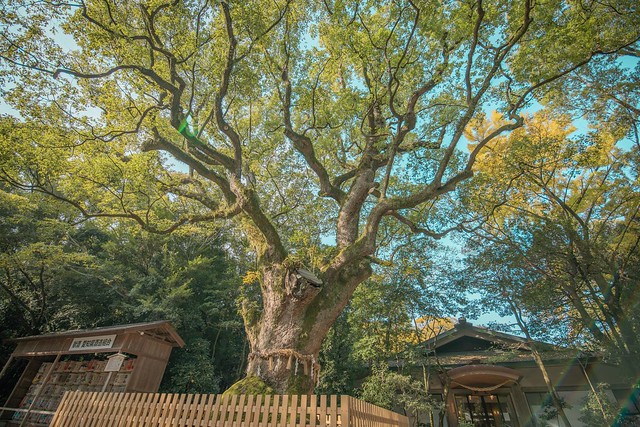
Sacred Camphor Tree that has been over for over 1000 years
Because of the shrine’s association with the the sacred Kusanagi sword, there’s a Treasure Hall known throughout Japan as a trove of famous swords so be sure not to miss it.
Arimatsu Shibori (Tie-dyeing) 有松絞り

Arimatsu-Narumi Shibori Museum Hall
Craving for a little traditional side of Japan in Nagoya after all? Head to Midori Ward, just 20-min from the city center to find yourself admiring the quietest, relaxing classic townscape and learning about one of the most laborious tie-dye technique developed from 400 years ago.

It is called Arimatsu Shibori.
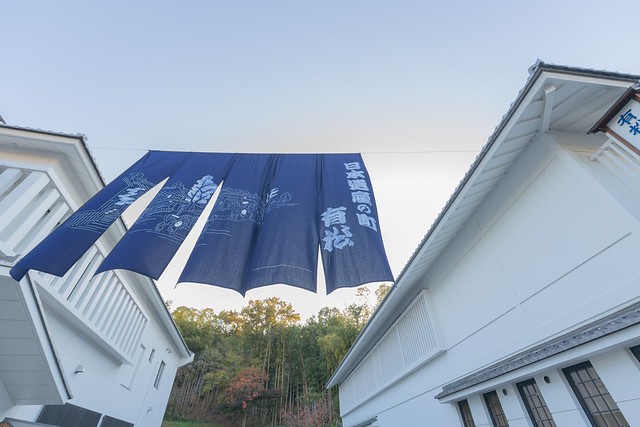
Arimatsu Shibori was first created when Tokugawa Ieyasu ordered workers from all over Japan to help build Nagoya castle in early Edo period (see how it all connects when you learn a little about history behind a story?), the people from Bungo (currently Oita prefecture) came and brought with them the tie-dye technique and taught to local families.

Arimatsu Shibori’s patterns are rich beyond comparison, with over 100 types including the signature “Kanoko” (spotty like that of a bambi), “Kumo Shibori” (spider-web tie dye) and “Miura” (named after a Bungo lady who developed the pattern).
You will find lots of Arimatsu Shibori fabric sold around town from traditional yukata to really modern stylish scarves. Of course, since Arimatsu Shibori is completely handmade (you won’t believe how tedious and laborious it is!!!) and takes around 4-6 months to complete, it often comes with a premium price. But if you have actually witnessed the entire process, you will understand why value totally justifies.
Learn all about it at Arimatsu Shibori Tie-Dyeing Museum!

There are also hands-on workshop where you can make your own Arimatsu Shibori. I went to Aya Irodori, founded by a lovely young mother and experienced tie-dyeing my own handkerchief for JPY1800. It’s pretty simple even for beginners and takes as quick as only 20 minutes.
Nagoyameshi
While in Nagoya, you won’t want to miss out all the yummy eats. Nagoyameshi its the local’s way of saying “Nagoya cuisine” in general.
What should you look for to fill your tummy up?

Hitsumabushi

Oyakodon using Nagoya’s famed “cochin eggs”

“Tebasaki” – fried chicken wings
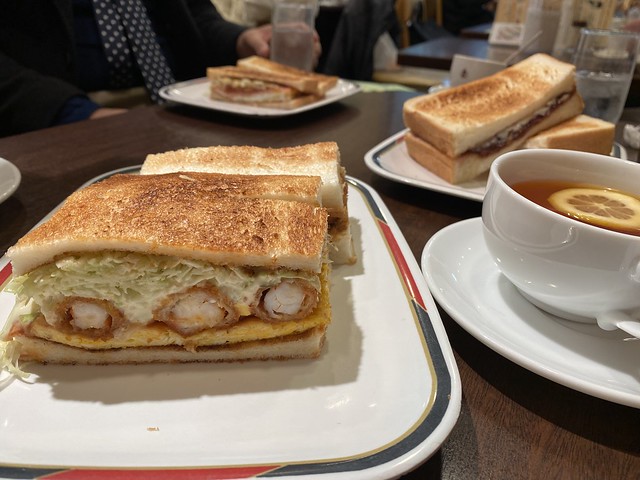
“Morning” – A breakfast set consists on typically coffee and delicious sandwich
A funny characteristic of Nagoyameshi is how brown all the food is, haha.
If you flip through the gourmet booklet of Nagoya, you will be amused at how the pages are just a palette of “cha-iro” (tea color). Think the classic Miso Katsu, (pork fillet with miso sauce), Ebi-fry , Tebasaki (fried chicken wings), Hitsumabushi (eel dish featured in above photo), Miso Oden (it’s so brown it’s almost hard to identify which is what), Ogura toast (toast with red bean), etc…..
The heavy use of Miso in almost all Nagoyameshi makes it really flavorful. Feast yourself with an array of tantalizing brown-looking food before you head home!
That’s all for Nagoya now.
In all its sumptuous medley of stylish extravaganza, Nagoya has finally won a place in my heart as a truly captivating city, with rich (mostly unhesitantly showy, too) history and culture just steps away from the flamboyant city center.
Meanwhile, check out JAPAN by Japan for travel ideas, itinerary and a chance to win a pair of return flight tickets to Japan!
https://japanbyjapan.com/


